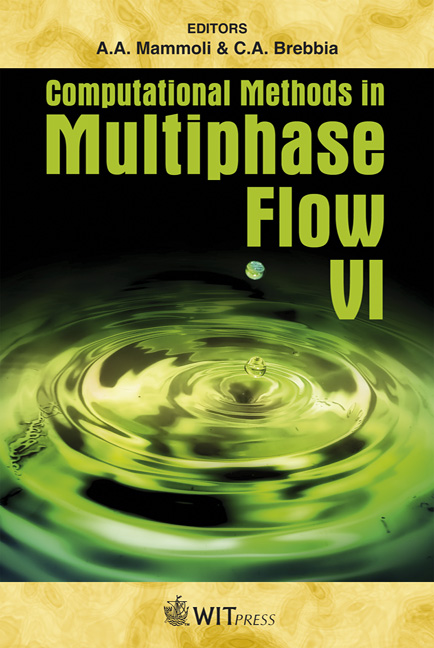Comparison Of Numerical Schemes For Computational Simulation Of Liquid Wavy Film Flow On Vertical Wall
Price
Free (open access)
Transaction
Volume
70
Pages
12
Page Range
29 - 40
Published
2011
Size
857 kb
Paper DOI
10.2495/MPF110031
Copyright
WIT Press
Author(s)
J. K. Min & I. S. Park
Abstract
Film flows are classified into no-wavy laminar, wavy laminar and turbulence along the Reynolds number or the flow stability. Since the wavy motions of the film flows are so intricate and nonlinear, the studies have largely been dependent upon the experimental way. The numerical approaches have been limited on the no-wavy flow regime. In this study, the film’s full wavy motion is numerically investigated. The present numerical approach is based on the VOF interface capturing methods. The implicit and explicit schemes for the interface time marching are compared with each other. The HRIC (High Resolution Interface Capturing) and the geometry reconstruction method are tested as the treatment of convective terms at the liquid-air interface. The dependency of the grid density and the time step size are investigated in the aspect of the probability density function of the film thickness. All results are compared with Takamasa’s experimental results. Keywords: wavy film flow, free surface, VOF. 1 Introduction The film flows are generally applied to the phase-change heat transfer (condensation or evaporation) because of their advantages for heat transfer like the high latent heat, the thin film thickness and the large heat transfer area.
Keywords
wavy film flow, free surface, VOF





